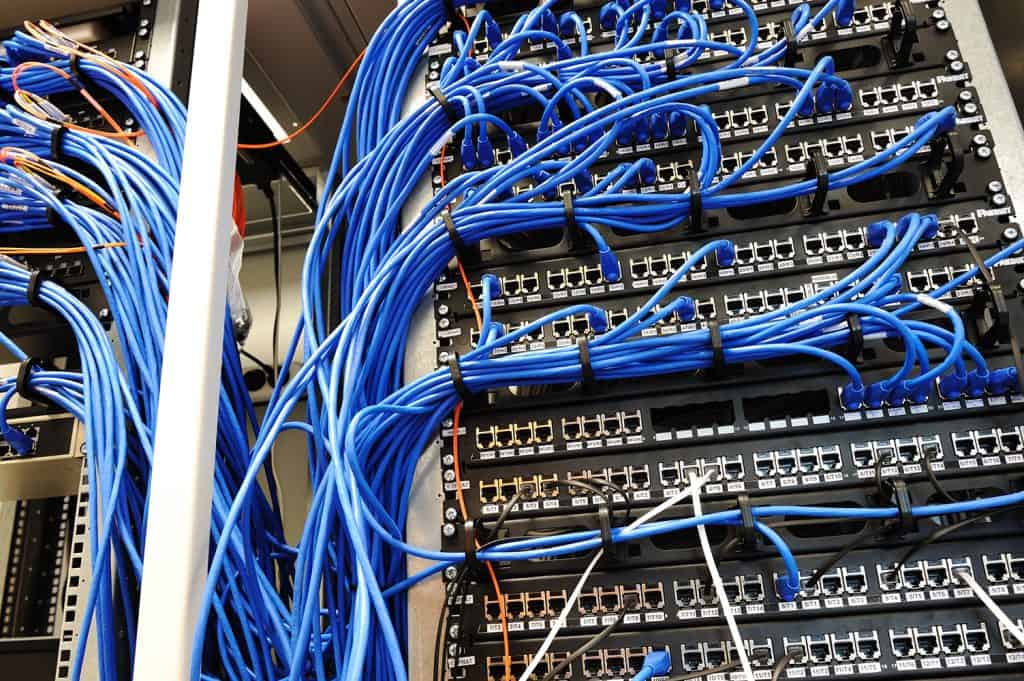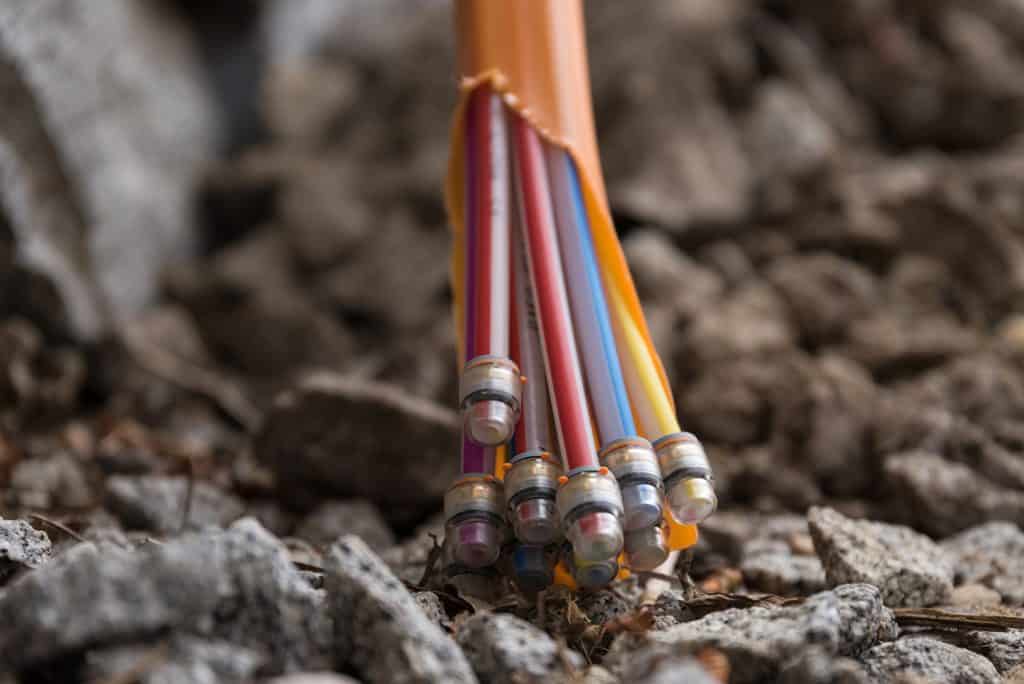Keeping your business connected is vital in the modern digital economy. Having an effective communications network can improve your internal operations; allowing your employees to operate more efficiently and your outreach; bringing your product to a wider audience and increasing sales. Whether you manage the IT systems in an office, commercial unit or school, ensuring your commercial network is up to date and running well is a simple way to upgrade the way your employees work and communicate. One of the biggest decisions is whether to install modern fibre optics or basic copper cabling when refurbishing or setting up a new commercial communications network, depending on the project either option could be suitable for your needs, so we’ve run up a quick guide to help you make the right cabling decision for your business.

What’s The Difference?
Copper cabling has been used in telecommunications for decades; reliable and cost effective, information is sent via electronic pulses through twisted pairs of copper wire. Fibre optic telecommunications have been around since the 70s but only recently have become cost effective enough to be considered for internal commercial networks. Transferring data through pulses of light through thin strands of glass or plastic, fibre optics cabling is resilient and effective, able to transmit huge amounts of data quickly and with minimal need for regular maintenance. Depending on the type of network you are hoping to set up; the amount of users, the size of the space you need to connect, how often you will need to make adjustments to the system, there will be a perfect cabling option for you. Whether that’s ultra modern fibre optics or the old standard, copper.

Speed and Bandwidth
Despite being around since the 70s, for a long time fibre optics were only utilised for military and governmental applications; originally invented by NASA fibre optics have been at the forefront of telecommunications technology for decades and available only at a price point that made it unsuitable for private commercial use. Over the last 20 years fibre infrastructure has become increasingly available, a whole network of public fibre broadband has been laid throughout the UK. The reason for the growing application of fibre cabling is obvious; it is much faster and more effective at sending large packets of data than copper cabling. Fibre optics allow for the transfer of large files quickly, essential in a modern digital economy where speed and information are vital commodities.
FIbre optics cabling can transfer files at 100 Gbps; potentially 10x faster than traditional copper cabling that maxes out at 10 Gbps. If your business works with large files, such as digital media, CAD drawings, film or executable programs, then switching to fibre optics can vastly improve the efficiency of transfers and communication between employees and clients, bringing your business to the forefront of modern technology.
Distance and Signal Integrity
Whether you are setting up a new commercial network, or updating a preexisting one, one of the biggest questions affecting the price point is how much cabling you will need? How big is the unit you are covering? How many machines will you need to connect? A huge sprawling network might require more cabling pushing you towards choosing cheaper materials. However you should also take into consideration that a sprawling network will need strong signal integrity; the machines need to be connected effectively, with minimal data packets dropped, making for an efficient and functional networking solution.
Copper cabling is more likely to throw up more problems on a day to day basis, with the signal degrading over distances greater than 100 metres, causing delays and problems while transferring larger files and requiring more regular maintenance. Fibre optics, by comparison, rarely drop files and can transfer at consistent rates across large expanses of cabling allowing for large businesses to operate consistently and effectively in the increasingly important digital sphere.

Installation and Cost
Here’s the kicker, especially if you’re operating on a budget, while the benefits of fibre optics cabling are clear a fibre optics network still costs significantly more in materials than a traditional copper network, as well as requiring specialist expertise to install. This increased cost might be prohibitive if you need to install a particularly expansive network such as in a school or commercial warehouse, where simply on the basis of price and budget you may find copper cabling to be a more effective solution.
Another consideration is how often you will need to make changes to the network, for example adding new machines to the network or extending it into new spaces within the workspace. Making regular changes to a copper cabling network can be much easier than a similar system installed with fibre optics, so despite some of it’s other failings the versatility, price point and ease of use of copper cabling might make it the ideal solution for your commercial communications network.
Durability and Security
Once again fibre optics wins out when it comes to considering the security of your network, being a closed system with sealed cables it is much less easy to tap into a fibre optics network than it is a copper one. Depending on the security needs of your business this could be a significant consideration that might easily justify the increased costs of fibre optics cabling. Protecting your business; its systems, your data and the data of your clients is an important part of any modern business and the added cost might be small compared to the relief you feel knowing your business operations are as secure as they can be.
Future Proofing
When considering the cost of a whole new commercial communications network future proofing will always be a factor. The digital market is always changing, file sizes are growing and technological demands are higher than ever; copper cabling is old tech and while it’s still used across the breadth of the UK it will eventually be replaced by newer and more practical solutions, just one of which is fibre optics cabling. Saving money on your installation now only to need to replace the whole thing in 10 years time might not be the most practical long term solution to your business’ networking needs. You may be on a tight budget now but investing effectively in the future of your business might just be the smart move.
It should be clear that the big difference between fibre optics and copper cabling is the price point. Fibre optics are the clear winner when it comes to most practical considerations; effectiveness, resilience, security, data protection and speed but they will always cost more than a simpler system connected by copper cables. If your network is large, requires regular adjustment and is used to mostly transfer smaller files such as emails then a copper network might be the most cost-effective solution for you. However if you are a truly digital operation, sending large media or executable files between machines or externally, if you need a resilient, high speed network then the extra financial outlay needed for fibre optics might be an essential investment in the future of your business.


